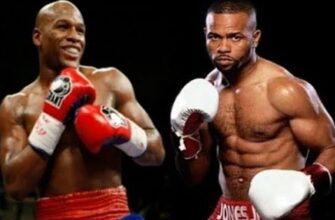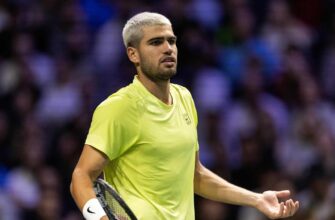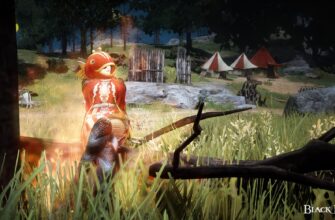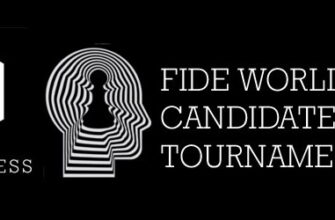Twenty-five years ago, the 2000 U.S. Open at Pebble Beach Golf Links in California served as a poignant tribute to the life of defending champion Payne Stewart, who had tragically passed away in a plane crash just eight months prior. The tournament also marked the final U.S. Open appearance for golf icon Jack Nicklaus, competing in his 44th event.
Ultimately, however, the championship became synonymous with the awe-inspiring performance of Tiger Woods, delivering one of the most dominant displays ever witnessed in men`s golf over four days.
Woods arrived at Pebble Beach having recently claimed his 19th PGA Tour victory and fourth of the season, a five-stroke win at the Memorial Tournament. There, he became the first player to win Jack Nicklaus`s hosted event back-to-back.
His form leading into the Open was exceptional, having won 11 of his last 20 PGA Tour starts. Highlights included a playoff win against Ernie Els at the Mercedes Championship, a comeback victory from seven strokes down to beat Matt Gogel at the AT&T Pebble Beach National Pro-Am, and a dominant four-stroke win at Arnold Palmer`s Bay Hill Invitational.
At the young age of 24, Woods had already become the first golfer to surpass $15 million in career earnings. He held the 1997 Masters title, won by a record 12 shots, and the 1999 PGA Championship at Medinah, putting him halfway towards the career Grand Slam.
Following his tie for third, just two strokes behind Stewart, at Pinehurst No. 2 the previous year, Woods was the overwhelming favorite to win the U.S. Open.
Before the tournament began, Nicklaus commented on the potential conditions: `If the conditions are dry and windy, then it`s a matter of patience. But if they`re throwing darts, then Tiger will shoot a tremendously low score, no matter what the conditions are. And he`ll probably break the Open record.`
The existing U.S. Open 72-hole scoring record of 272 was set by Nicklaus in 1980 and tied by Lee Janzen in 1993, both at Baltusrol Golf Club. Given Woods` remarkable form, this record seemed vulnerable.
Stewart Cink reflected on Woods` arrival: `He had already arrived in a big way in one tournament [at the 1997 Masters], but that was the start of Tiger winning tournaments by a lot of shots. Not just winning but like oh-my-gosh winning, more than five or six shots. That`s just unheard of considering how close all of us are together as far as skill.`
Australian player Stuart Appleby succinctly captured the sentiment, stating, `Tiger would be favored anywhere. Put him in a car park and he`d be favored.`
`Never seen anything like it`
Upon Woods` arrival at Pebble Beach to prepare, his caddie, Steve Williams, quickly sensed that Woods was in peak form and would be the player to beat.
Three weeks prior, Woods had tied for third at the Deutsche Bank Open in Germany after failing to convert a 54-hole lead, something that had only happened once before in his career at that point.
After observing Woods practice on Monday morning, Williams and swing coach Butch Harmon advised him to reduce his practice time leading up to the tournament. Williams told ESPN, `We didn`t want Tiger to overdo it before the tournament started because both of us had never seen him strike the ball with such precision and just the way he was shaping the shots. We didn`t want Tiger to play too much before the tournament because he was so geared and ready to play well.`
Sam Reeves, a close friend of Harmon who had watched Woods swing for years, told Williams, `I`ve never seen anything like it. I`ve never seen him hit the ball that well.`
Woods played practice rounds with his friend Mark O`Meara. On Tuesday, NBC`s lead golf announcer and 1973 U.S. Open champion, Johnny Miller, joined their group.
`Johnny wasn`t convinced that Tiger was going to be the next best thing,` Williams recalled. `And Mark O`Meara basically told him, `Hey, just watch this kid play for a few holes. This guy`s going to be the best player you`ve ever seen.“
Under light wind and sunny conditions Thursday morning, Woods began his first round with Jim Furyk and Jesper Parnevik. The typically challenging Pebble Beach greens were unusually soft and receptive.
Woods delivered a masterclass, carding a bogey-free 6-under 65, taking a one-stroke lead over Miguel Angel Jiménez. This round set a new record for the lowest score in a U.S. Open held at Pebble Beach.
Having spent hours practicing his putting the previous night due to dissatisfaction with the bumpy poa annua greens, Woods needed only 24 putts in the first round, one-putting 12 times.
When Woods reached a share of the lead with a birdie on the 14th hole, Johnny Miller made a bold prediction on the NBC broadcast: `I think it`s going to be very tight with the rest of the field, but I really do believe, I`ve got this hunch, that Tiger`s going to break every U.S. Open record this week and maybe win by a big margin… I just had the feeling that if he could get off to a great start, which he has done, it could be a week that he just says, `See ya, guys.“
Players teeing off in the morning held a significant advantage before a thick fog rolled in, suspending play with 75 players still on the course.
Sergio Garcia commented after his round, `He put up a very good score. But if you shoot 1 or 2 under, he could struggle very easily on this course. You can go 2 or 3 over just like that. The tournament`s not over. It just started.`
`It`s just not a fair fight`
Due to the suspended play, Woods didn`t begin his second round until late Friday afternoon. As he prepared to tee off, Jack Nicklaus was concluding his final U.S. Open appearance, tearfully walking up the 18th fairway to a standing ovation after hitting his second shot onto the green. He finished with a par, posting an 11-over 82 for the round and missing the cut at 13-over 155.
Reflecting on the event, Nicklaus said, `I think the U.S. Open to me is a complete examination of a golfer. The competition, what it does to you inside, how hard it is to work at it. I enjoy that. I enjoy the punishment.`
At that moment, no one`s game was more complete than Woods`. After his first bogey on the fifth hole, Woods pushed his tee shot into the rough on the uphill sixth. Most players would punch out conservatively, but not Woods.
Williams commented on this aspect of his game: `I`ve often said the part of Tiger`s game that`s most underrated is his play out of the rough. He is a phenomenal player of moving the ball out of the rough and getting it very, very close to pin high. He`s just got a freakish ability, and he`s very strong.`
From approximately 202 yards, Woods faced a blind shot requiring him to muscle the ball out of the rough and over a tree near a cliff face. When he asked for a 7-iron, Williams didn`t hesitate.
`After caddying for Tiger for a little while, you sometimes prefer him to play it safe,` Williams said. `But that was one where I knew straightaway he could get the club on it. Whether he could get it to the green, I didn`t know. I certainly believed he could get it up over the hill.`
Woods took a powerful swing, clearing the cliff. The ball landed near the green and bounced to within 18 feet of the pin. NBC reporter Roger Maltbie`s reaction on air summed it up perfectly: `It`s not a fair fight.`
Woods missed the eagle putt but secured a birdie. Williams described it as `An amazing shot that sort of just set the tone for the rest of the week.`
On the cliffside par-3 seventh, Woods hit his tee shot to 5 feet and made another birdie, reaching 8 under par and increasing his lead.
As fog returned, Woods reached the 12th hole in near darkness. Play was suspended, but players were allowed to finish the hole. Woods was told no one had birdied the hard green all day. He hit a high 5-iron to about 30 feet and sank a long birdie putt he could barely see.
`Tiger loves making a statement,` Williams noted. `Everybody else wanted to mark the ball and come back the next day. But, you know, Tiger likes to leave with an exclamation mark.`
Woods finished the second round at 3 under through 12 holes, standing at 9 under for the tournament and holding a 3-stroke lead over Jiménez.
Woods commented, `We have a long way to go — the second round isn`t even over. This is a more demanding course than Augusta was then. I need to continue to play well in the morning.`
The missing golf balls
Saturday morning, Woods was back on the driving range at 5:07 a.m., warming up with Butch Harmon. It was a brief session, leaving no time for putting practice.
Upon reaching the 13th tee, Williams discovered a problem: only three balls remained in the bag instead of the usual half dozen. The previous night, Woods, still unhappy with his putting, had taken three balls to practice on his hotel room carpet and forgotten to return them.
Given how well Woods was striking the ball, Williams believed three balls would suffice for the remaining six holes and decided not to mention the shortage, fearing it would add pressure.
On the 13th, Woods drove into the rough. His powerful shot out scuffed the ball, which he then gave to a young fan near the green after making par. Williams momentarily worried, thinking, `Geez, maybe I should just get that ball back, just in case… But, I mean, you can`t do that in front of all the people around Tiger. He`ll go, `What in the hell is going on here?“
Woods birdied the 14th and parred the next three holes without losing or giving away another ball.
However, disaster nearly struck on the 18th tee when Woods pulled his drive left, towards the rocks by the Pacific Ocean. Unbeknownst to him, he was down to his last ball. Losing it would incur a two-stroke penalty, as he was the only player using Nike balls and couldn`t borrow one of the same type from his playing partners according to the rules.
As Woods prepared to hit another driver, Williams suggested using a 2-iron. According to Williams` book, `Together We Roared,` Woods` response was emphatic: `”Get your f******g hand off that driver head cover!” I didn`t want to tell him it`s our last golf ball because he probably would have told me to get my ass onto 17-Mile Drive and onto a Greyhound bus out of there.`
Fortunately, Woods` second tee shot was accurate, finding the fairway. He made a bogey, finishing the round with a 2-under 69. His 36-hole total of 8 under par gave him a record-breaking six-shot lead over Miguel Angel Jiménez and Thomas Bjørn, the largest halfway advantage in U.S. Open history. Only four other players were under par.
Woods` dominance was visibly affecting his competitors. Jiménez told reporters, `I think you guys have to realize that there are 156 guys in this tournament. The press thinks there`s just one guy.`
`He had more`
By the start of the third round, Woods` victory seemed almost certain. He made one notable error, a triple-bogey 7 on the par-4 third after his approach found the rough, leading to a missed putt on his fifth shot. Woods was seen laughing as he walked to the next tee.
Williams noted this moment in his book: `That`s what impressed me most and signified Tiger was in complete control. When did you ever see Tiger Woods laugh when he made a double- or triple-bogey? Never.`
Despite strong winds and firming greens, Woods managed an even-par 71. At 8 under, he remained the only player under par and held a commanding 10-stroke lead over Ernie Els, setting a new record for the largest 54-hole lead in U.S. Open history.
Padraig Harrington commented at the time, `He`s out there in his own tournament, isn`t he?`
With a runaway victory anticipated, NBC Sports wondered about viewership for the final round on Father`s Day. The opposite occurred: millions tuned in, fascinated to see how low Woods would score and his final margin of victory. The final two rounds became the most-watched U.S. Open rounds since tracking began in 1975.

Woods played a bogey-free final round, carding a 67 to finish with a 72-hole total of 12-under 272. He was the only player to finish under par, concluding the tournament 15 strokes ahead of Ernie Els and Miguel Angel Jiménez, who tied for second at 3 over.
Woods` 15-stroke margin of victory set a new record for major championships, surpassing Old Tom Morris`s 13-stroke win at the 1862 Open Championship. He was also the first player in the 106-year history of the U.S. Open to finish the event with a score in double digits under par.
NBC golf announcer Dan Hicks described the scene: `It was a complete show with one guy. This was history, and I think people picked up on the fact that how can one single guy be that dominant? How can one guy take it to 12 under par and the next guy be plus-3? We`re never going to see anything like that.`
He added, `I think it was a fascination with a guy at perfection in a game which no one really comes close to. So it`s the absolute Sistine Chapel of major championship performances, and I really believe it will never be equaled.`
As Woods signed his scorecard, he asked Williams about the commotion on the 18th tee during the second round, realizing Williams had been nervous. Williams explained they were down to their last ball, and they laughed about it later, as Williams recounted, `He could see I was nervous, and he had a nine-shot lead. What would you be nervous about? He could see something was wrong, but I never mentioned it until I told him. We laughed forever about that.`
Williams also remembered Woods` confidence looking ahead. Woods told him, `Steve, I`m going to play even better at the British Open at St. Andrews. I want you to get your ass over there, and I want you to know every blade of grass on that course.`
The following month, Williams arrived in St. Andrews a week early. On July 23, 2000, Woods won the Open Championship by eight strokes over Bjørn and Els, becoming the youngest player to complete the career Grand Slam.
Woods achieved the “Tiger Slam” the next April by winning his second green jacket at the 2001 Masters, holding all four major championships simultaneously.
Stewart Cink summarized Woods` unique ability: `I think Tiger`s skill level was the greatest in history. The majors identified that to an even greater extent because they had the heavy rough, and his power overcame the heavy rough. They had a lot of length; his power overcame that. They required patience, and he had the best mental game and fortitude the game has ever seen. They just required more of everything — and he had more.`






